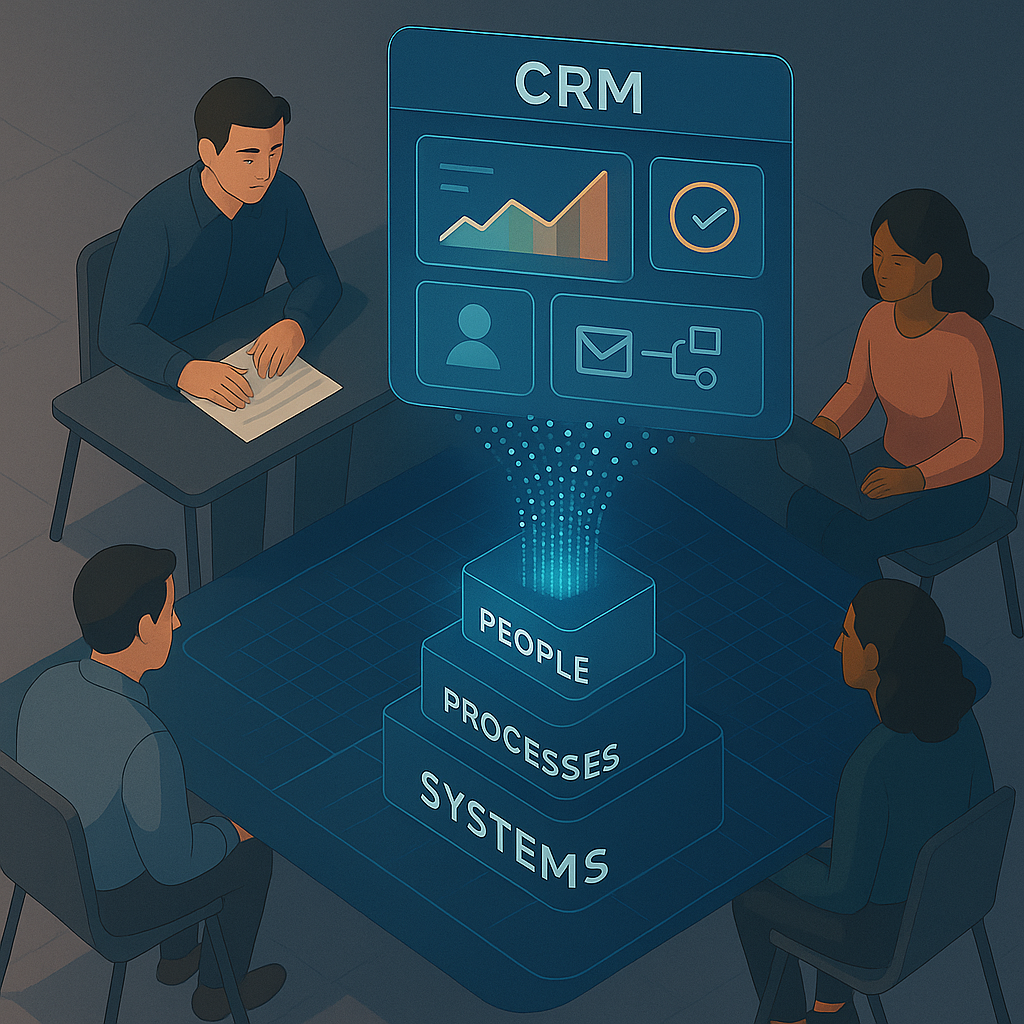Updating HubSpot Forms and CTAs
Updating HubSpot forms and CTAs ensures seamless lead capture. Create or link forms directly in CTA modules, customize fields, and publish updates to...
3 min read
Bradley Michel
:
Nov 19, 2025 11:00:00 AM
You’ve outgrown spreadsheets. Your team’s juggling leads, customers, and chaos. So, you buy a CRM.
Six months later, you’re already outgrowing that too.
Sound familiar?
Let’s be real: most CRMs aren’t built to scale. They’re built to sell.
Scalability isn’t just about how many contacts your CRM can store. It’s about whether it can keep up — structurally, operationally, and strategically — as your business evolves. Most systems? They buckle under the pressure of real growth: too many users, too many processes, too much everything.
So what does a truly scalable CRM need?
If your CRM still feels like a glorified Excel doc with prettier buttons, it’s not scalable — it’s fragile.
A scalable CRM needs to mirror your business, not force it into rows and columns. That means:
Adding custom objects (not just leads and deals) without breaking your workflows
Defining real relationships between companies, contacts, and transactions — like a proper database
Syncing data from your ERP, eCommerce, or support tools without creating a duplicate disaster
Translation? If your CRM can’t represent how your business actually works, it’ll fail the second you try to grow.
Here’s how automation goes wrong:
A rogue workflow get set up. Nobody documents it. And now every new lead gets 4 conflicting emails… or worse, none at all.
Scalable automation means:
Ownership: You know who owns what. No mystery logic.
Documentation: Every workflow has a blueprint — not head knowledge.
Reusability: Build once, then reuse across teams.
If your automations look like spaghetti code, they’ll slow you down just when you need speed the most.
As your company grows, so do the politics and process debt. Everyone wants access. No one wants accountability.
A scalable CRM enforces structure with:
Clear user roles and team-based access
Hierarchies of visibility (sales doesn’t need to poke around in finance)
Audit trails — so when something breaks, you know who touched it, when, and why
Growth without governance is just chaos with better branding.
A scalable CRM doesn’t just tolerate integrations. It expects them.
Your CRM should:
Plug into your ERP, support, marketing, quoting, inventory, and billing systems — with APIs or native sync
Support real-time, two-way data flow — not batch jobs or CSV duct tape
Why? Because your CRM is only as smart as the systems it talks to. If it lives in a silo, your team’s flying blind.
Scaling without insight is just guesswork.
You can’t fix what you can’t see — and a CRM that hides reporting behind complexity or canned dashboards will leave you stuck.
You need:
Real-time dashboards anyone can understand
Custom metrics that reflect how your business works
Cross-object reporting — from lead to renewal, not just sales KPIs
When you can see what’s really happening, you stop reacting and start anticipating.
The best CRM in the world? Useless if your team doesn’t use it.
Scalability depends as much on people as tech. And adoption dies when systems:
Feel like a second job
Create more friction than clarity
Are “set it and forget it” with no ongoing support or training
A scalable CRM must evolve with its users. That means continuous enablement, measurement, and iteration.
Because growth without adoption isn’t scale. It’s software shelfware.
You can’t scale chaos.
A scalable CRM isn’t just a data hub — it’s a discipline engine. It helps your team follow process without having to remember the process.
That includes:
Pipelines that match your actual sales motions
Handovers between sales, onboarding, support — with nothing falling through the cracks
Automated nudges that keep deals moving
When CRM meets process, consistency scales naturally.
A CRM isn’t a one-and-done project. It’s an evolving system.
If you’re not auditing, optimizing, and adapting it every quarter, you’re falling behind. What worked for a team of 10 won’t work for 50. And £1M in revenue processes will hardly scale to £10M.
Scalable CRMs don’t wait to break before they evolve. They’re built with continuous improvement in mind.
Most CRM failures aren’t technical. They’re cultural.
You don’t “buy” scalability. You build it — in how your team thinks, works, and adapts.
If your CRM isn’t helping you grow without breaking what already works, it’s time to rethink what scalability really means.
And maybe start looking for a system that respects the reality of growth.
Here's some others we think you'll love

Updating HubSpot forms and CTAs ensures seamless lead capture. Create or link forms directly in CTA modules, customize fields, and publish updates to...

There’s a quiet revolution happening in CRM. Not another gimmicky “AI assistant,” but a shift in how businesses think about relationships. Because...
Picture this: A mid-sized manufacturing company knows their sales team is wasting hours every week pulling reports manually, and their CRM is a mess....